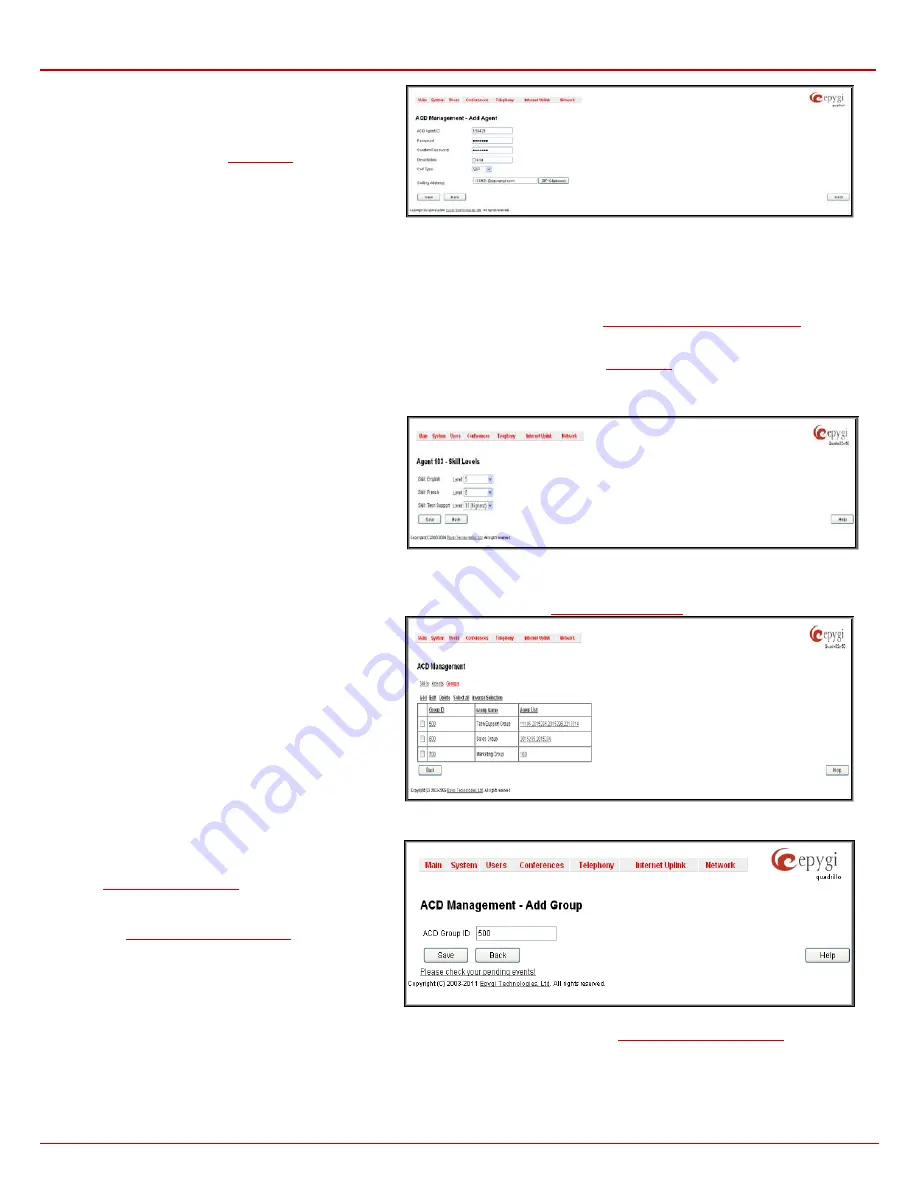
QX1000 Manual II: Administrator's Guide
Administrator’s Menus
QX1000; (SW Version 5.3.x)
83
•
SIP
– calls through a SIP server
•
Auto
– used for undefined call types. The
destination (independent on whether it is a PBX
number, a SIP address or a PSTN number) will be
reached through the
table.
Fig. II-135: ACD Management - Add Agent page
The
Calling
Address
text field is used to define the address by which the agent can be contacted. The value in this field is strictly dependent on the
Call Type
defined in the same named drop down list.
If the
PBX
call type is selected, the
Calling Address
field should contain the extension number on QX1000 and the corresponding agent can be
reached by calling on extension number located on the same QX1000. However, it doesn’t necessarily mean that the agent shall be located at that
QX1000 – if the extension is remote extension then agent’s location might be far from QX1000.
For the
SIP
call type, the
Calling Address
field should contain the SIP address (see chapter
Entering a SIP Addresses correctly
) and the
corresponding agent can be reached by calling on SIP address. The agent with that kind of termination number might be located either at the same
QX1000 or anywhere else in the SIP network.
For the
Auto
call type, the
Calling Address
field should contain the phone number routable through
table on QX1000. The agent with
that kind of termination number might be positioned in any of the above mentioned locations.
Pressing on the
Skill Value
column of the
Agent Management
table will lead you to the
Agent - Skill Levels
page where the skill levels for the
corresponding agent should be configured.
The
Agent - Skill Levels
page consists as many drop down
lists as Skills created in the Skills page (see below). For each
available Skill you should select the skill level (from 0 to 10,
with 0 meaning the absence of that specific skill and 10
meaning the highest level) matching to the corresponding
agent.
Fig. II-136: ACD Management – Agent Skills page
The
Groups
page of
ACD Management
contains a list of ACD Group type extensions filtered from the Extensions Management table. This page
allows you to configure the ACD Group specific parameters, i.e. a collection of agents included to the group, call queue and the call distribution
mechanism. Any new ACD Group created in this page will automatically be displayed in the
table.
Add
opens the
Add Group
page where a new ACD Group
may be created. The
Add Group
page includes the only
ACD Group ID
text field which requires the ACD Group
number (extension).
Fig. II-137: ACD Group Management page
The ACD Group ID should not match any existing extension
in the
ACD Group will automatically appear in the Extensions
Management table.
Edit
in the Extensions
Management.
Fig. II-138: ACD Group Management - Add Entry page
Pressing on the links in the
Group ID
and
Agents List
columns of the
Groups
table will lead you to the
settings and the list of group’s agents may be adjusted correspondingly.






























